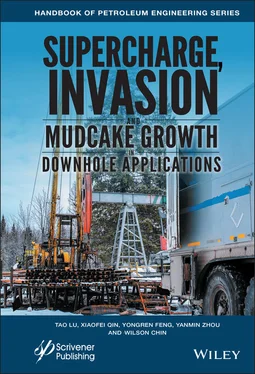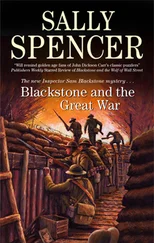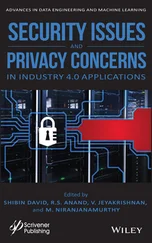1 Cover
2 Title Page
3 Copyright
4 Preface
5 Acknowledgements
6 1 Pressure Transient Analysis and Sampling in Formation Testing 1.1 Conventional Formation Testing Concepts 1.2 Prototypes, Tools and Systems
7 2 Spherical Source Models for Forward and Inverse Formulations 2.1 Basic Approaches, Interpretation Issues and Modeling Hierarchies 2.2 Basic Single-Phase Flow Forward and Inverse Algorithms 2.3 Advanced Forward and Inverse Algorithms 2.4 References
8 3 Practical Applications Examples 3.1 Non-constant Flow Rate Effects 3.2 Supercharging – Effects of Nonuniform Initial Pressure 3.3 Dual Probe Anisotropy Inverse Analysis 3.4 Multiprobe “DOI,” Inverse and Barrier Analysis 3.5 Rapid Batch Analysis for History Matching 3.6 Supercharge, Contamination Depth and Mudcake Growth in “Large Boreholes” – Lineal Flow 3.7 Supercharge, Contamination Depth and Mudcake Growth in Slimholes or “Clogged Wells” – Radial Flow 3.8 References
9 4 Supercharge, Pressure Change, Fluid Invasion and Mudcake Growth 4.1 Governing equations and moving interface modeling 4.2 Static and dynamic filtration 4.3 Coupled Dynamical Problems: Mudcake and Formation Interaction 4.4 Inverse Models in Time Lapse Logging 4.5 Porosity, Permeability, Oil Viscosity and Pore Pressure 4.6 Examples of Time Lapse Analysis 4.7 References
10 5 Numerical Supercharge, Pressure, Displacement and Multiphase Flow Models 5.1 Finite Difference Solutions 5.2 Forward and Inverse Multiphase Flow Modeling 5.3 Closing Remarks 5.4 References
11 Cumulative References
12 Index
13 About the Authors
14 Also of Interest
15 End User License Agreement
1 Chapter 1 Figure 1.1. Drawdown-buildup pressure response with dynamic pumping action and f... Figure 1.2. Downhole, surface and logging truck operations. Figure 1.3. Recent formation testing book publications. Figure 1.4. Conventional formation tester tool strings. Figure 1.5. Formation testers, additional developments. Figure 1.6. Conventional dual and triple probe testers. Figure 1.7. Dual probe tester with dual packer. Figure 1.8. Early COSL single and dual probe prototype formation testers (detail... Figure 1.9. COSL pad designs with varied sizes and shapes, for different applica... Figure 1.10. Tool string configurations. Figure 1.11. Tool architectures. Figure 1.12. Surface control interface. Figure 1.13. Pressure measurement chart (left) and real-time fluid monitoring ch... Figure 1.14. Tool string configurations. Figure 1.15. Tool architecture. Figure 1.16. Tool and surface system. Figure 1.17. Pressure drawdown curve (left) and fluid contact curve (right). Figure 1.18. IPSRD stuck tool release mechanism. Figure 1.19. Rigsite facilities. Figure 1.20. New triple probe formation tester. Pads with “small round nozzle an... Figure 1.21. New COSL triple probe tester, perspective view. Figure 1.22. Simulator menu for Probes 3, 7 and 11 (top), sink Probe 7 pressure ...
2 Chapter 2 Figure 2.1. Early COSL single and dual probe formation testers (where “dual” ref... Figure 2.2. Single probe formation tester (courtesy, COSL). Figure 2.3. Dual probe formation tester (courtesy, COSL). Figure 2.4. Piston pad pressed against the sandface. Figure 2.5a. Idealized spherical flow for isotropic formations, ellipsoidal flow... Figure 2.5b. Axisymmetric “ring” source. Figure 2.6. Ellipsoidal anisotropic flow, skin layer, three-dimensional finite e... Figure 2.7. “Near-Wellbore, Finite-Element Simulator (NEWS™)” from Halliburton E... Figure 2.8. Dual probe, pretest, simulation-pressure contours, 100 md isotropic ... Figure 2.9. Pressure contours for the first drawdown with two probes and the sec... Figure 2.10a. Forward simulation assumptions. Figure 2.10b. Pumpout schedule, volume flow rate. Figure 2.10c. Source probe pressure. Figure 2.10d. Observation probe pressure. Figure 2.11a. Source (bottom) and observation probe (top) pressure responses. Figure 2.11b. Inverse steady-state solver. Figure 2.12a. Constant rate pumping example. Figure 2.12b. Source probe response (all runs). Figure 2.12c. Observation probe response versus dip angle. Figure 2.13a. k h= 10 md, k v= 1 md (that is, k h> k v). Figure 2.13b. k h= k v= 4.642 md (that is, isotropic). Figure 2.13c. k h= 1 md, k v= 100.0 md (that is, k h< k v). Figure 2.14a. Three-dimensional computational mesh. Figure 2.14b. Borehole orientation. Figure 2.14c. Azimuthal pressure response in layered media. Figure 2.15a. Layered anisotropic media with dipping tool. Figure 2.15b. Pressure transient response, amplitude and phase contrasts clear (... Figure 2.15c. Multiple receiver phase delay formation tester (see, Section 2.3.5... Figure 2.15d. Transmitter-receiver, receiver-receiver operational modes (see, Se... Figure 2.16a. Nomenclature for pressure transient analysis. Figure 2.16b. Exact FT-00 forward simulation results from single pre-test (note ... Figure 2.16c. Predicted pore pressure and mobility (lower right). Figure 2.16d. Exact FT-00 forward simulation pressures for two sequential pre-te... Figure 2.16e. Predictions (first pre-test). Figure 2.16f. Predictions (second pre-test). Figure 2.17a. FT-06 liquid-gas simulator inputs. Figure 2.17b. FT-06 pump rate and pressure solutions. Figure 2.18. Repeat formation tester (RFT™). Figure 2.19a. Test procedure from Schlumberger U.S. Patent 5,279,153 (flat press... Figure 2.19b. New method for multiple drawdowns (refer to lower transient curves... Figure 2.20a. Schlumberger mobility parameters assumed. Figure 2.20b. Pressure response inferred from steady Schlumberger. Figure 2.21a. Flowline volume, 200 cc. Figure 2.21b. Flowline volume, 500 cc.Figure 2.21c. Flowline volume, 1,000 cc.Figure 2.21d. Flowline volume, 2,000 cc.Figure 2.22a. Time-dependent flowline volume.Figure 2.22b. Volume flow rate, flowline volume, source probe pressure plots.Figure 2.23. Simple “two-receiver” observation probe.Figure 2.24. Transmitter “marker” defines instant of departure.Figure 2.25a. Estimating time delays for given parameters.Figure 2.25b. Predicting permeability from time delay.Figure 2.26. Amplitude (left) and phase delay (right) versus r and ω.Figure 2.27a. Constant frequency pump excitation.Figure 2.27b. Input data and exploded view.Figure 2.27c. Source and observation probe pressure.Figure 2.28a. Square wave assumptions and pressure responses.Figure 2.28b. Pressure responses, exploded view.Figure 2.29a. Layered anisotropic medium with dipping tool.Figure 2.29b. Discretized grid for finite difference solution.Figure 2.30. Windows-based program interface.Figure 2.31. Rotatable plot of √(P r 2+ P i 2) versus x and y for given layer (“...Figure 2.32. Phase delay plot (-100 to +100 psi for source pressure).Figure 2.33. Output text summaries.Figure 2.34a. Very high 1,000 md run.Figure 2.34b. High 100 md run.Figure 2.34c. Moderate 10 md run.Figure 2.34d. Low 1 md run.Figure 2.35a. Isotropic run, high permeability middle layer.Figure 2.35b. Isotropic run, low permeability middle layer.Figure 2.35c. Anisotropic run, high permeability middle layer.Figure 2.35d. Anisotropic run, low permeability middle layer.Figure 2.36a. Vertical tool (0° dip) in layered anisotropic medium.Figure 2.36b. Horizontal tool (90° dip) in layered anisotropic medium.Figure 2.36c. Deviated tool (45° dip) in layered anisotropic medium.Figure 2.37a. Isotropic three-layer system.Figure 2.37b. Dual probe system entirely in top layer.Figure 2.37c. Source in middle layer, observation probe outside.Figure 2.37d. Dual probe system entirely in middle layer.Figure 2.38a. Three layer example.Figure 2.38b. Observation probe responses at 10 Hz (left) and 0.5 Hz (right).Figure 2.39a. FT-00 (Main Interactive) exact forward liquid simulator.Figure 2.39b. FT-00 (Batch Mode) exact forward liquid simulator.
Читать дальше










